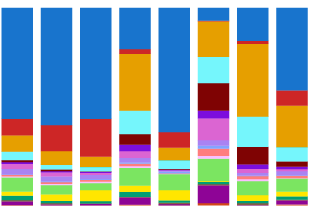All life is connected in a vast family tree. Every organism exists in relationship to its ancestors, descendants, and cousins, and the path between any two individuals can be traced. The same is true of cells within organisms — each of the trillions of cells in the human body is produced through successive divisions from a fertilized egg, and can all be related to one another through a cellular family tree. In simpler organisms, such as the worm C. elegans, this cellular family tree has been fully mapped, but the cellular family tree of a human is many times larger and more complex.
In the past, MIT professor and Whitehead Institute for Biomedical Research member Jonathan Weissman and other researchers developed lineage tracing methods to track and reconstruct the family trees of cell divisions in model organisms in order to understand more about the relationships between cells and how they assemble into tissues, organs, and — in some cases — tumors. These methods could help to answer many questions about how organisms develop and diseases like cancer are initiated and progress.

